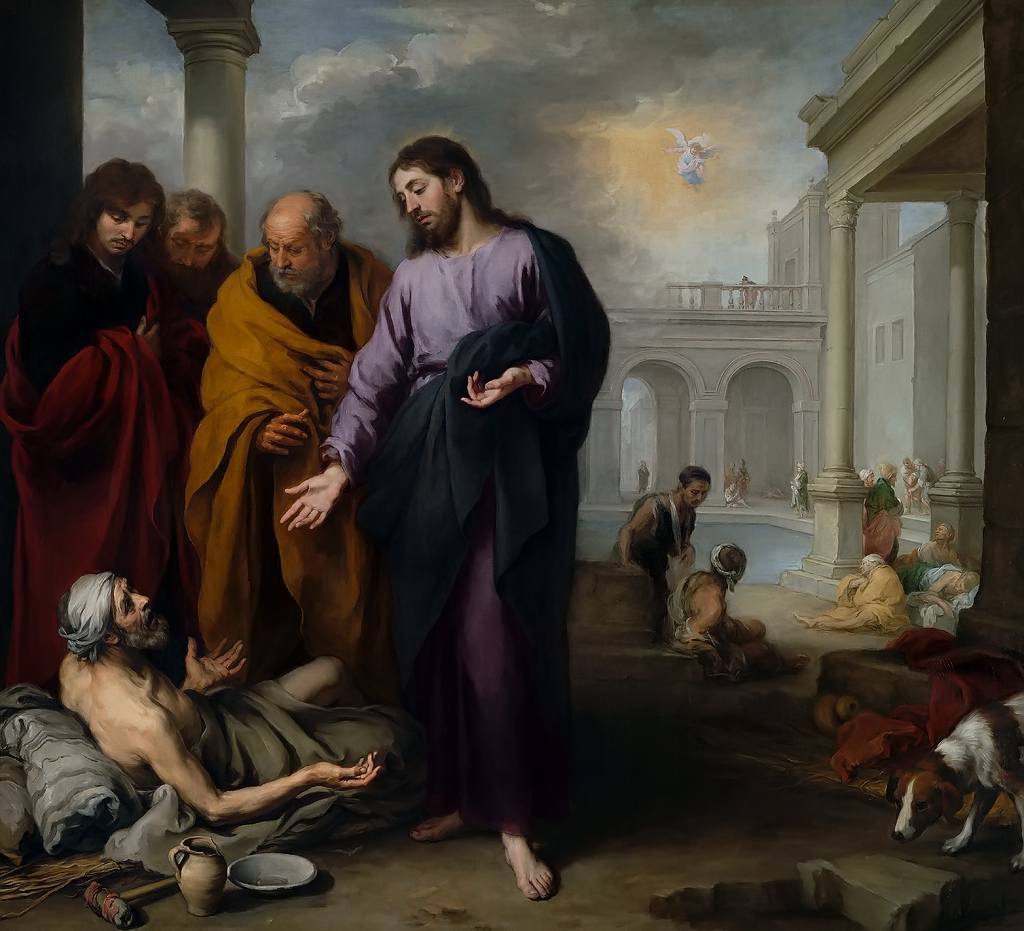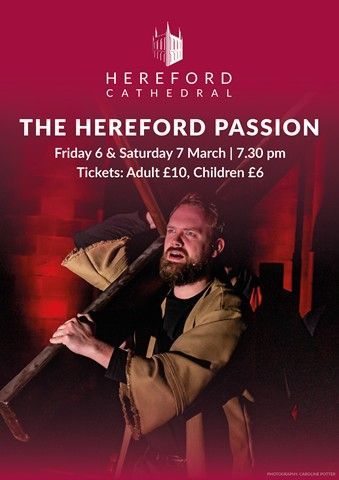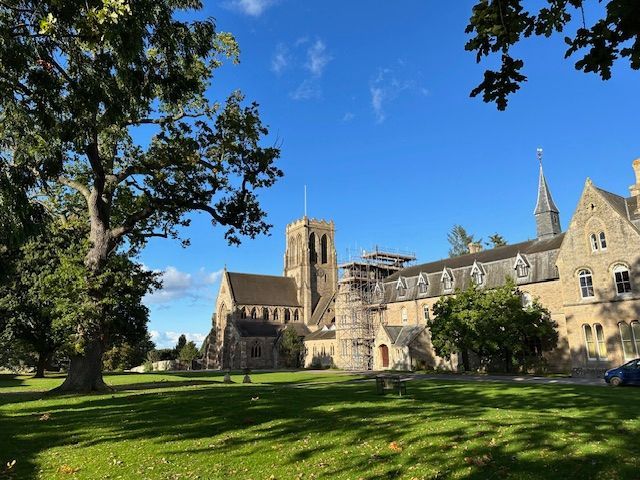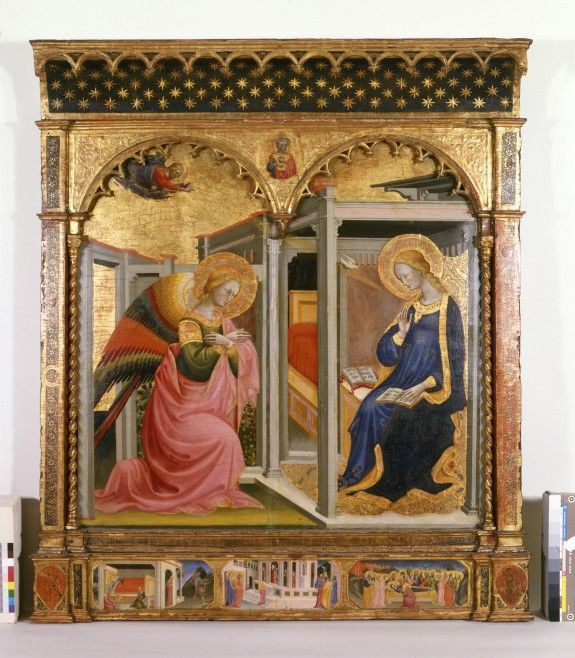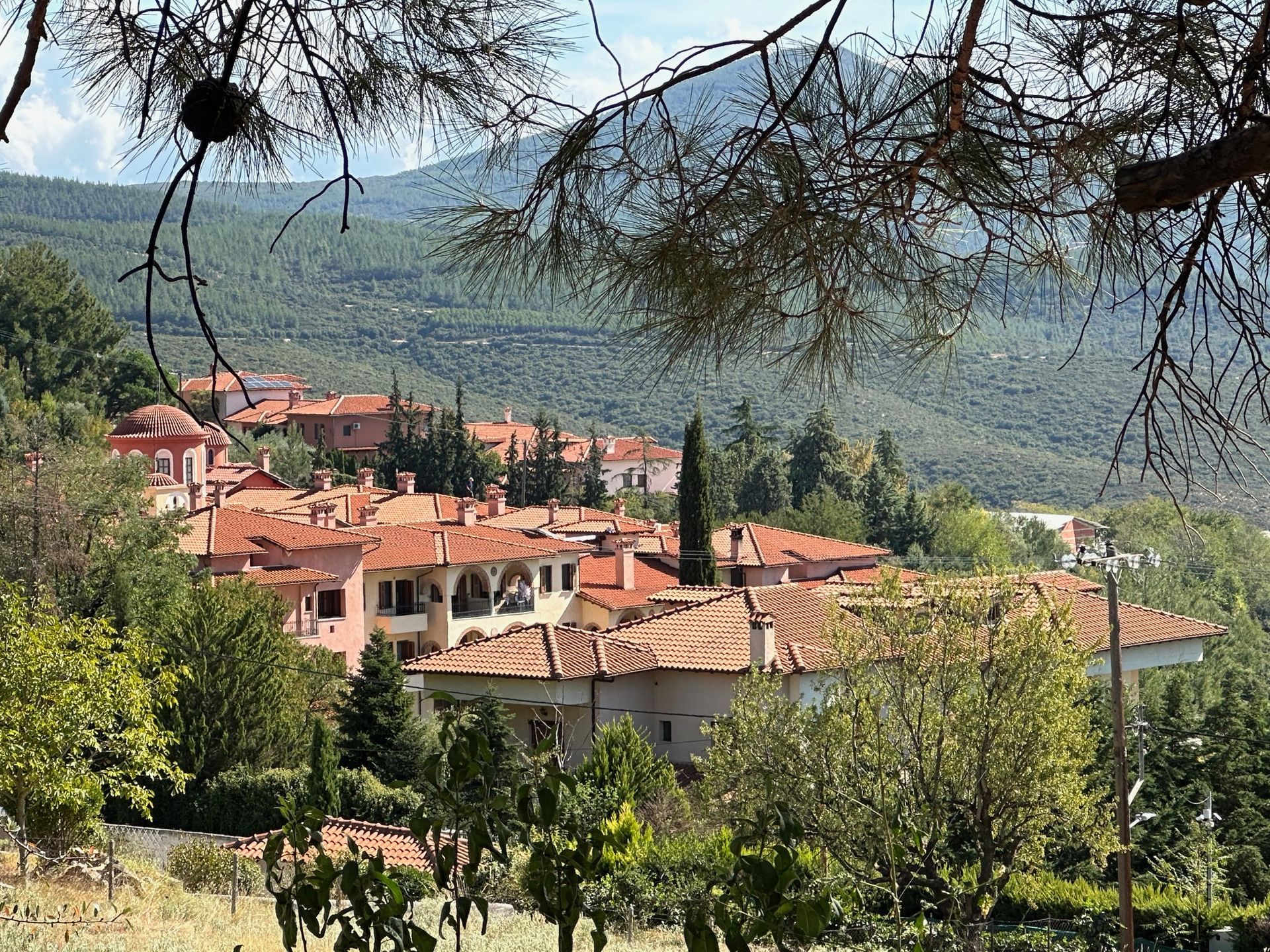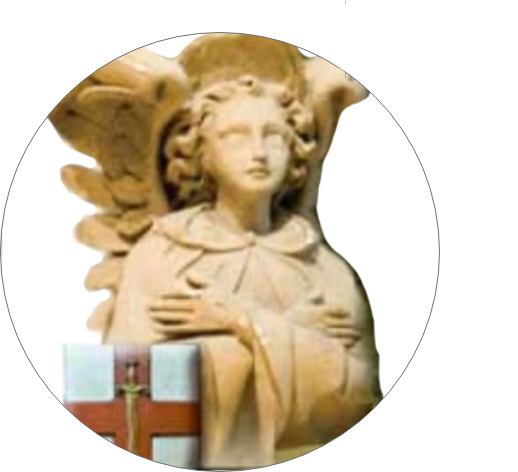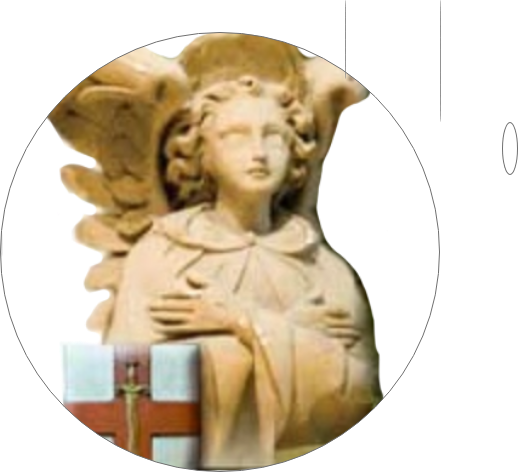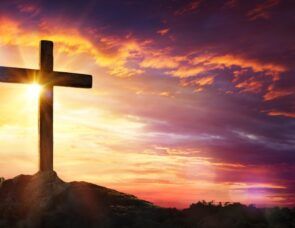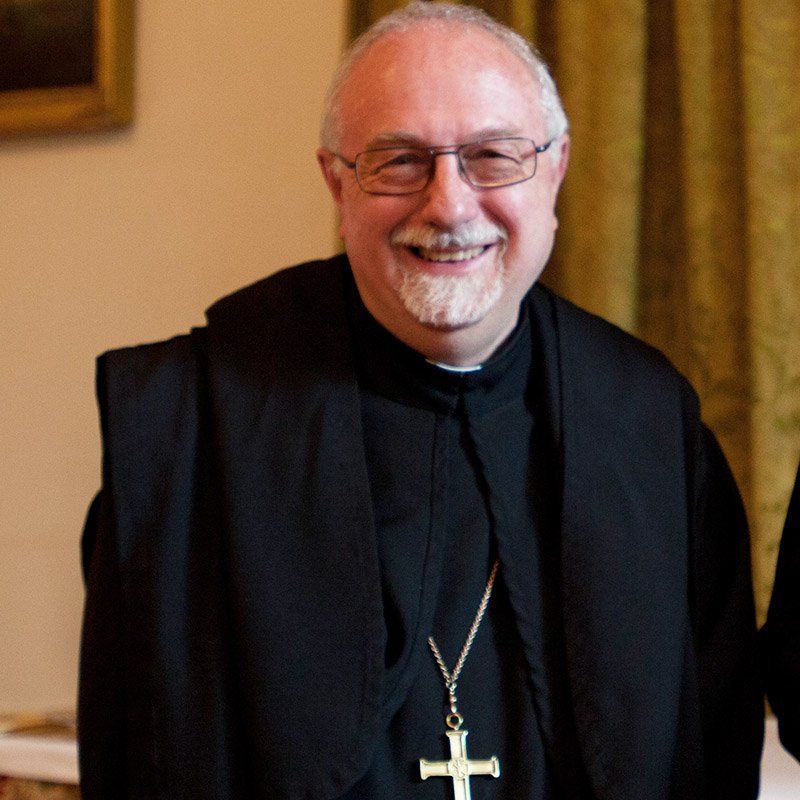Message from Fr Paul for Tuesday 29th March
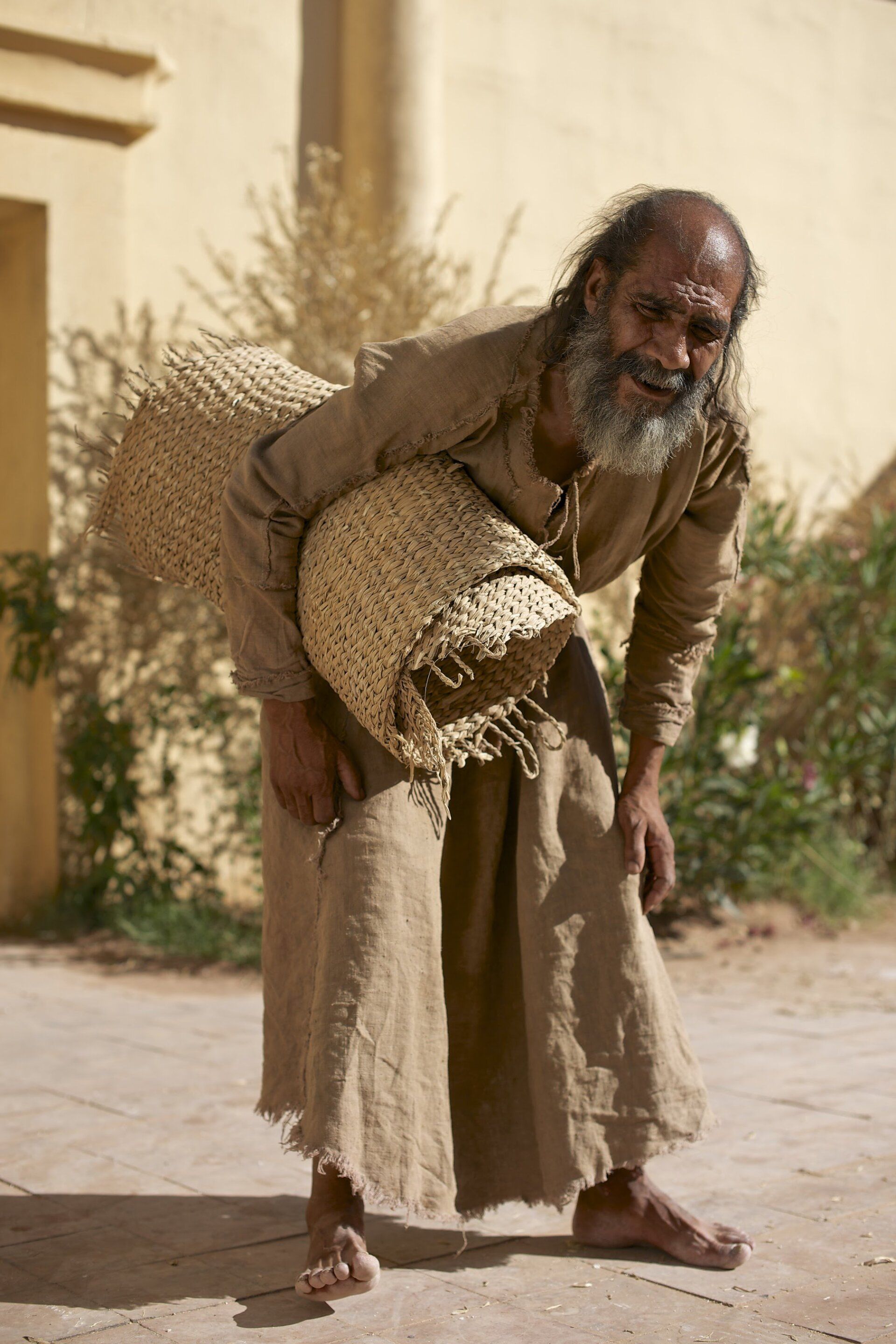
As Lent proceeds and we get closer to Holy Week, our daily Gospel readings come from John. Yesterday we read of the healing of a court official’s son and the account was very similar to those we read in the Synoptics. Apart from the faith of the official and his entire household coming to believe in Jesus, a very positive outcome, there is no negative reaction on the part of the usual enemies of Jesus, the scribes and Pharisees. Today we read of another healing, that of a man who had been lame for thirty eight years, a long time in anyone’s book, but not since birth. Let’s read how that healing occurred. The whole reading is Jn 5: 1-16.
“There was a Jewish festival, and Jesus went up to Jerusalem. Now at the Sheep Pool in Jerusalem there is a building, called Bethzatha in Hebrew, consisting of five porticos; and under these were crowds of sick people – blind, lame, paralysed – waiting for the water to move. One man there had an illness which had lasted thirty-eight years, and when Jesus saw him lying there and knew he had been in this condition for a long time, he said, ‘Do you want to be well again?’ ‘Sir,’ replied the sick man ‘I have no one to put me into the pool when the water is disturbed; and while I am still on the way, someone else gets there before me.’ Jesus said, ‘Get up, pick up your sleeping-mat and walk.’ The man was cured at once, and he picked up his mat and walked away.” What we always notice in John is amount of detail he shares with his readers. We know the exact spot where this miracle took place in Jerusalem and the particular circumstances surrounding it. We could ask why Jesus chose to heal this man and not any of the others and why none of the others come forward and beg for healing, either before or after the miracles. It’s as though Jesus is unknown. On the other hand, so intent are the blind, the lame and the paralysed on observing the water in the hope it begins to move, that they hardly notice Jesus or hear him conversing with the sick man. Jesus allows the sick man to tell him his tale of woe and heals him there and then, simply ordering him to take up his mat and walk, which is exactly what the man does. It’s all so matter of fact, so out of the blue, but the story doesn’t finish there. It was a Sabbath and the man is seen carrying his sleeping mat, something forbidden on that day. The account continues:
“Now that day happened to be the sabbath, so the Jews said to the man who had been cured, ‘It is the sabbath; you are not allowed to carry your sleeping-mat.’ He replied, ‘But the man who cured me told me, “Pick up your mat and walk.”’ They asked, ‘Who is the man who said to you, “Pick up your mat and walk”?’ The man had no idea who it was, since Jesus had disappeared into the crowd that filled the place. After a while Jesus met him in the Temple and said, ‘Now you are well again, be sure not to sin any more, or something worse may happen to you.’ The man went back and told the Jews that it was Jesus who had cured him. It was because he did things like this on the sabbath that the Jews began to persecute Jesus.” How come it always happens to be the Sabbath when Jesus heals the sick or casts out evil spirits? Actually, he only healed seven people on the sabbath out of the thirty eight recorded in the Gospels. One reason was to show up the hypocrisy of the scribes and Pharisees (here in John simply called “the Jews’). They interpreted the Law according to their own whims in order to have power over the people. Another reason, perhaps more important, is to point out that he is Lord of the Sabbath. When Jesus meets the man again, he is in the Temple, the place to give thanks to God. Jesus warns him to sin no more: now that his life has been touched by God, he must not lose the grace of healing he has received. The story ends ominously with mention of the persecution of Jesus, not so much because he healed the sick, but because he did it on the Sabbath when all work was forbidden. On another occasion, Jesus will ask whether it is right or wrong to save a life on the Sabbath, what is more important the law of love, the law of life, or the law of religious observance. What do you think?
